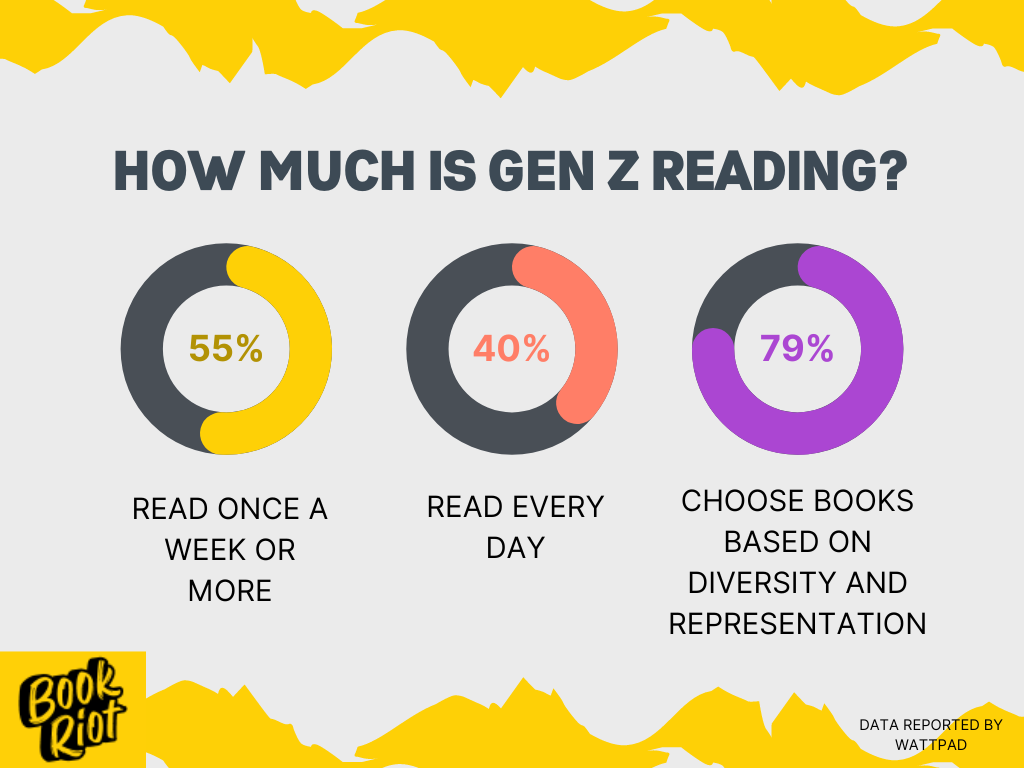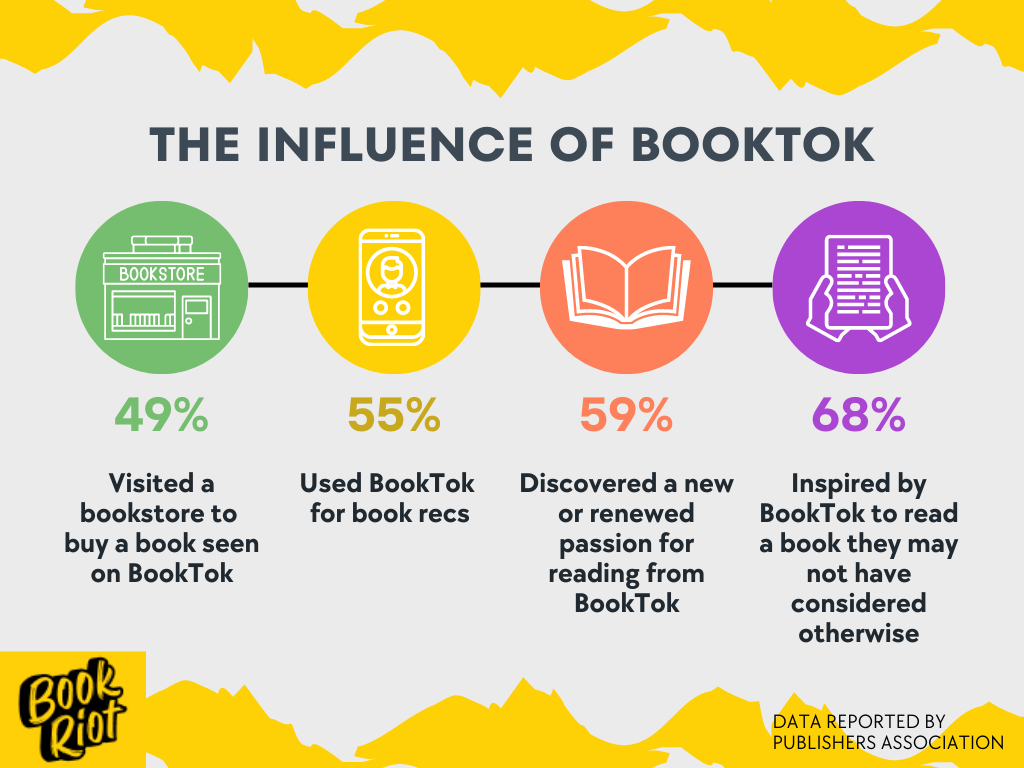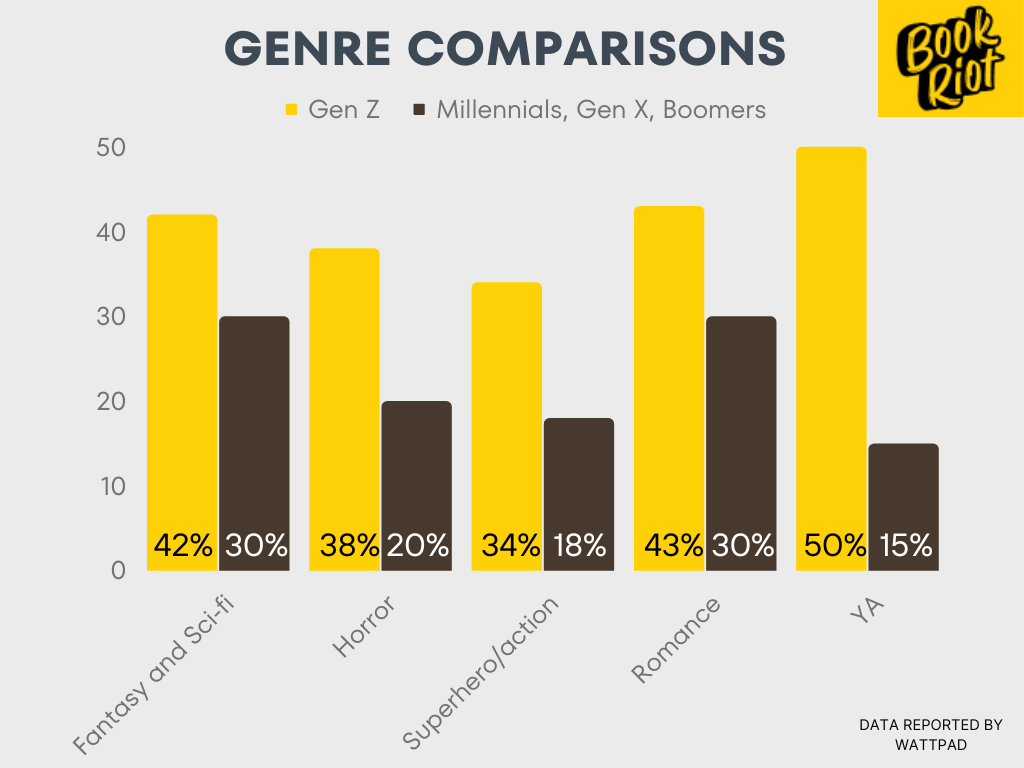
What are the Actual Reading Trends for Gen Z?
Every generation has assumptions and generalizations made about them, and Gen Z has not escaped this rite of passage. One concrete fact about Gen Z, however, which is backed up by cold hard data, is that they are massive book worms. They love to read.
We’re going to dive into recent studies and reports that have gathered data on the state of reading among folks aged 26 and under to give you a real picture of the reading trends among Gen Z, from how much they read to how diversely they read, to where they get their recommendations from (looking at you, BookTok), and even what genres they prefer.
Gen Z Reading Habits and Diversity
Wattpad released a report this past December on this generation’s reading habits, and 55% of Gen Z respondents said they read once a week or more, and 40% read every day. Some 35% are also reading even more than they did two years ago.

The influences on what they read are also unprecedented compared to previous generations. Books with rich diversity and representation are incredibly important to them, to the tune of 79% of respondents stating that the level of diversity and representation in their books and media plays a huge role in what they choose to consume. This is far higher than previous generations, with 66% of Millennials, 53% of Gen X, and 34% of Boomers prioritizing diversity in their books.
They are also more likely than any other generation to specifically seek out media that highlights marginalized groups: 60% of Gen Z readers do so, compared to 40% of other reading generations.
As far as overall book sales go, we reported last year that more people were reading and global book sales were looking fantastic. Gen Z helped contribute to another great year in book sales in 2022. Although sales were down from a record strong year in 2021 by 6.5%, Publishers Weekly reported a very respectable 788.7 million books sold in 2022. Trade paperbacks actually sold more in 2022 than usual (comprising 60% of sales), and hardcover sales declined by 3%.
Despite 67% of Gen Zers surveyed reading on their phones, those paperback sales are, in large part, due to Gen Z readers. In the UK, for example, that number is even higher: Nielsen BookData reported that print books made up 80% of the book sales attributed to readers from ages 13 to 24 between November 2021 and November of last year.
Physical Books Are the Superior Choice
Gen Z readers vastly prefer physical print books over ebooks. Only 14% of sales in their age group were ebooks last year. When interviewed about why this is by Business Insider, the usual bookish reasons cropped up first: loving that beautiful book smell that can’t be replicated on an ereader; the ability to curate a physical book collection and acquire special edition copies; the growing practice of annotating and tabbing books in creative ways.
The reasons don’t stop there, however. A number of Gen Z readers are citing digital eye strain as something print books give them relief from. Print books also make it easier to focus on the narrative, instead of the built-in distractions of your phone, ereader, or browser. More and more, young adults aged 16-24 are also participating in digital detoxes to decrease their exposure to social media. Their change in preferred reading format supports that.
Another positive outcome from this preference is their strong support for independent bookstores and libraries. Gen Z readers are more conscious about where their money is going, and their first choice appears to be supporting their local bookstores over buying from major online retailers like Amazon.
The Power of Booktok
The rise of BookTok plays a massive role in Gen Z’s increased reading habits and preference for physical books as well. BookTok has fostered an incredible reading community for all ages, but Gen Z in particular uses it for book recommendations, posting reviews, and building community to share their reading experiences with each other. The #booktok hashtag alone has amassed over 80 billion views.

It’s also played a role in widening their genre preferences, which we’ll get into more next. A massive 68% of Gen Z readers polled by Publishers Association indicated that BookTok inspired them to read a book they may not have otherwise picked up, and 49% of those readers are going to physical bookstores to buy those books. BookTok also renewed and ignited a passion for reading in 59% of respondents, and 55% of Gen Z readers use BookTok for their book recommendations.
Preferred genres
Unsurprisingly, Gen Z is also showing up every other generation with its willingness to read widely. In their efforts to find more diverse stories, 83% of Gen Z readers bypass traditional books altogether and turn to webcomics, indie publishing, serialized fiction, and webnovels to get them (or make it themselves).
They’re also reading more of any genre compared to previous generations.

YA is incredibly popular with Gen Z, with 50% of Gen Z respondents enjoying young adult works, versus just 15% of other generational readers. Romance is next at 43%, in comparison with 30% for other generations; fantasy and sci-fi at 42% compared to 30%; horror at 38% versus 20%; and superhero/action fiction at 34% versus just 18%.
To put it simply, Gen Z is full of bookworms who love to read widely and diversely. If you’re interested in more information about this generation’s relationship with reading, check out these posts:

















